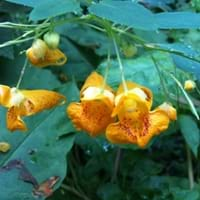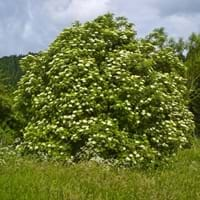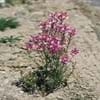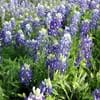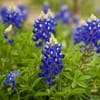Life Span
Annual
Perennial
Type
Fern, Succulent
Flowering Plants, Fruits, Herbs, Shrubs
Origin
Africa, Canada, North America, United States
Australia, South America
Types
impatiens balsaminak, impatiens hawkeri
Adams Elderberry, Black Beauty Elderberry, Black Lace Elderberry, Johns Elderberry, Nova Elderberry
Habitat
Grassland, River side
Farms, Homesteads, Near organic waste disposal
USDA Hardiness Zone
2-11
4-8
Sunset Zone
Not Available
2a, 2b, 3a, 3b, 4, 5, 6, 7, 14, 15, 16, 17
Habit
Upright/Erect
Upright/Erect
Flower Color
Yellow, Orange
White
Flower Color Modifier
Bicolor
Not Available
Fruit Color
Green
Purple, Red
Leaf Color in Spring
Green
Green
Leaf Color in Summer
Green
Green
Leaf Color in Fall
Green
Yellow green
Leaf Color in Winter
Light Green
Not Available
Leaf Shape
Elliptic, toothed
Compound
Plant Season
Summer, Fall
Early Spring
Sunlight
Partial Sun, Partial shade
Full Sun, Part sun
Type of Soil
Loam, Sand
Loamy, Sandy, Well drained
The pH of Soil
Acidic, Neutral
Slightly Acidic
Soil Drainage
Average
Average
Bloom Time
Summer, Late Summer, Early Fall
Early Spring, Spring
Tolerances
Pollution
Pollution
Where to Plant?
Ground
Ground
How to Plant?
Stem Planting, Transplanting
Grafting, Seedlings
Plant Maintenance
Low
Medium
Watering Requirements
Needs less watering
Requires regular watering, Use Mulches to help prevent water loss during hot and windy weather
In Summer
Moderate
Lots of watering
In Spring
Moderate
Moderate
In Winter
Average Water
Average Water
Soil pH
Acidic
Slightly Acidic
Soil Type
Clay
Loamy, Sandy, Well drained
Soil Drainage Capacity
Clay, Moist
Average
Sun Exposure
Bright direct sunlight
Full Sun, Part sun
Pruning
Prune lower leaves, Prune ocassionally
Cut or pinch the stems, No pruning needed in the early stages, Prune for shortening long shoots, Prune if you want to improve plant shape, Prune in winter, Prune ocassionally, Remove deadheads
Fertilizers
Fertilize only when soil is poor
All-Purpose Liquid Fertilizer
Pests and Diseases
Bacteria wilt, Downy mildew, Drought
Canker, Leaf spot, Powdery mildew, Stem spot, Tomato Ringspot Virus
Plant Tolerance
Drought, Dry soil
Drought
Flower Petal Number
Single
Single
Foliage Texture
Medium
Medium
Foliage Sheen
Matte
Matte
Attracts
Bees, Butterflies, Hummingbirds
Birds
Allergy
allergic conjunctivitis, Asthma, Runny nose
Diarrhea, Nausea, Vomiting
Aesthetic Uses
Cottage Garden
Not Used For Aesthetic Purpose
Beauty Benefits
Poison Ivy
Not Available
Edible Uses
Sometimes
Yes
Environmental Uses
soil erosion prevension on hill slopes
Air purification
Medicinal Uses
antimicrobial, treating poison ivy, Upset stomach
constipation, Fever, Heart problems, High cholestrol, HIV/AIDS, Nerve pain, swine flu
Part of Plant Used
Bark, Leaves
Flowers, Fruits
Other Uses
Can be made into a herbal tea
Not Available
Used As Indoor Plant
No
No
Used As Outdoor Plant
Yes
Yes
Garden Design
Cottage garden
Not Available
Botanical Name
IMPATIENS capensis
Sambucus nigra
Common Name
Jewelweed
Elderberry
In Hindi
Not Available
Elderberry
In German
Impatiens capensis
Holunderbeere
In French
Impatiente du Cap
Sureau
In Spanish
Impatiens capensis
Saúco
In Greek
Impatiens capensis
Elderberry
In Portuguese
Impatiens capensis
Sabugueiro
In Polish
Impatiens capensis
Bez czarny
In Latin
Impatiens capensis
Elderberry
Phylum
Magnoliophyta
Magnoliophyta
Class
Magnoliopsida
Magnoliopsida
Order
Geraniales
Dipsacales
Family
Balsaminaceae
Adoxaceae
Clade
Dicotyledonous
Angiosperms, Asterids, Eudicots
Tribe
Not Available
Not Available
Subfamily
Not Available
Not Available
Properties of Jewelweed and Elderberry
Wondering what are the properties of Jewelweed and Elderberry? We provide you with everything About Jewelweed and Elderberry. Jewelweed doesn't have thorns and Elderberry doesn't have thorns. Also Jewelweed does not have fragrant flowers. Jewelweed has allergic reactions like allergic conjunctivitis, Asthma and Runny nose and Elderberry has allergic reactions like allergic conjunctivitis, Asthma and Runny nose. Compare all the properties and characteristics of these two plants. Find out which of these plant can be used as indoor plant. If you are interested to decorate your house and garden, find out aesthetic uses, compare them and select the plant which will beautify your surrounding. Along with beautification, try comparing medicinal and edible uses of Jewelweed and Elderberry and you can choose the plant having best and most benefits.
Season and Care of Jewelweed and Elderberry
Season and care of Jewelweed and Elderberry is important to know. While considering everything about Jewelweed and Elderberry Care, growing season is an essential factor. Jewelweed season is Summer and Fall and Elderberry season is Summer and Fall. The type of soil for Jewelweed is Loam, Sand and for Elderberry is Loamy, Sandy, Well drained while the PH of soil for Jewelweed is Acidic, Neutral and for Elderberry is Slightly Acidic.
Jewelweed and Elderberry Physical Information
Jewelweed and Elderberry physical information is very important for comparison. Jewelweed height is 90.00 cm and width 30.00 cm whereas Elderberry height is 9.00 cm and width 8.00 cm. The color specification of Jewelweed and Elderberry are as follows:
Jewelweed flower color: Yellow and Orange
Jewelweed leaf color: Green
Elderberry flower color: White
- Elderberry leaf color: Green
Care of Jewelweed and Elderberry
Care of Jewelweed and Elderberry include pruning, fertilizers, watering etc. Jewelweed pruning is done Prune lower leaves and Prune ocassionally and Elderberry pruning is done Cut or pinch the stems, No pruning needed in the early stages, Prune for shortening long shoots, Prune if you want to improve plant shape, Prune in winter, Prune ocassionally and Remove deadheads. In summer Jewelweed needs Moderate and in winter, it needs Average Water. Whereas, in summer Elderberry needs Lots of watering and in winter, it needs Average Water.
